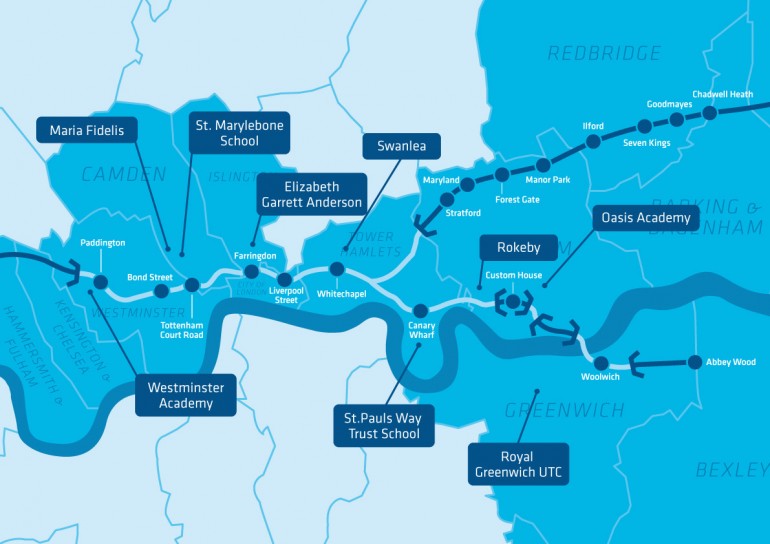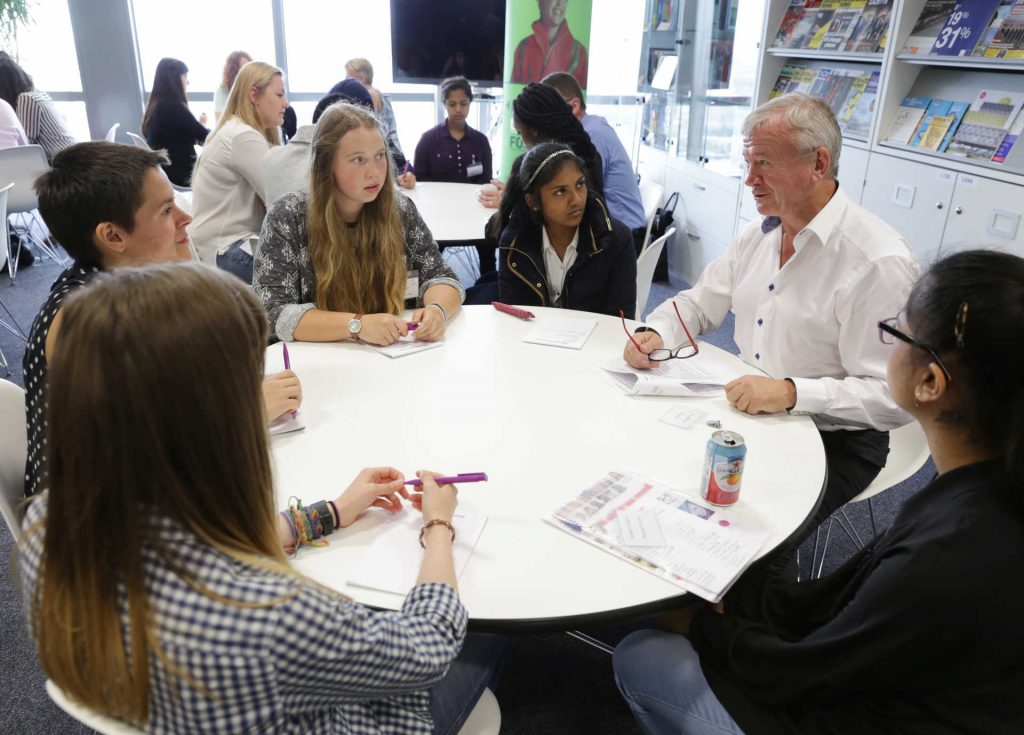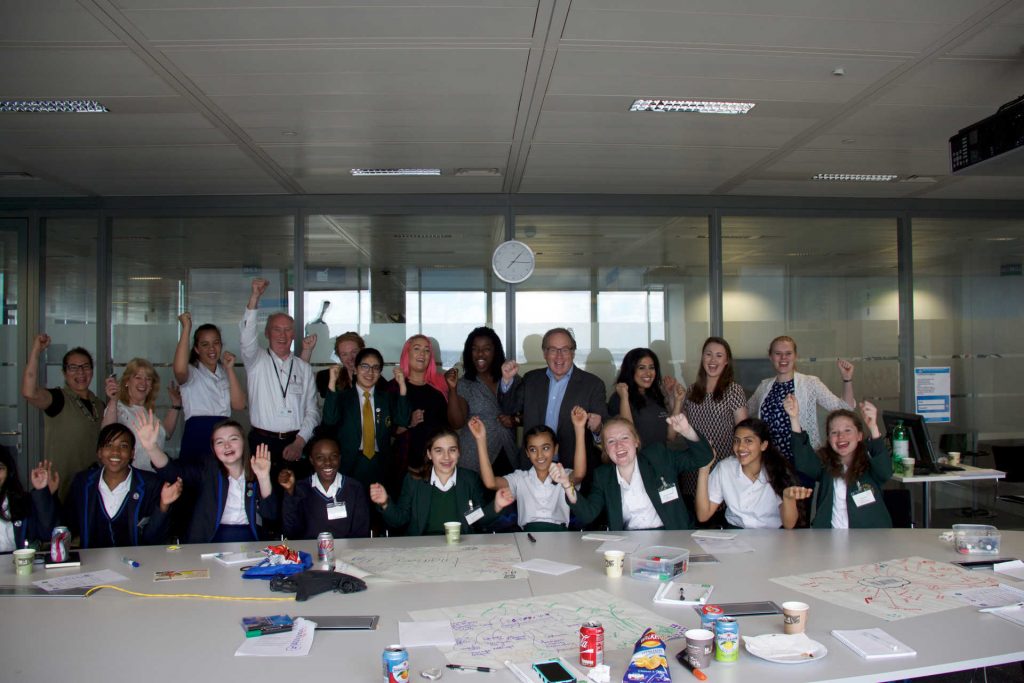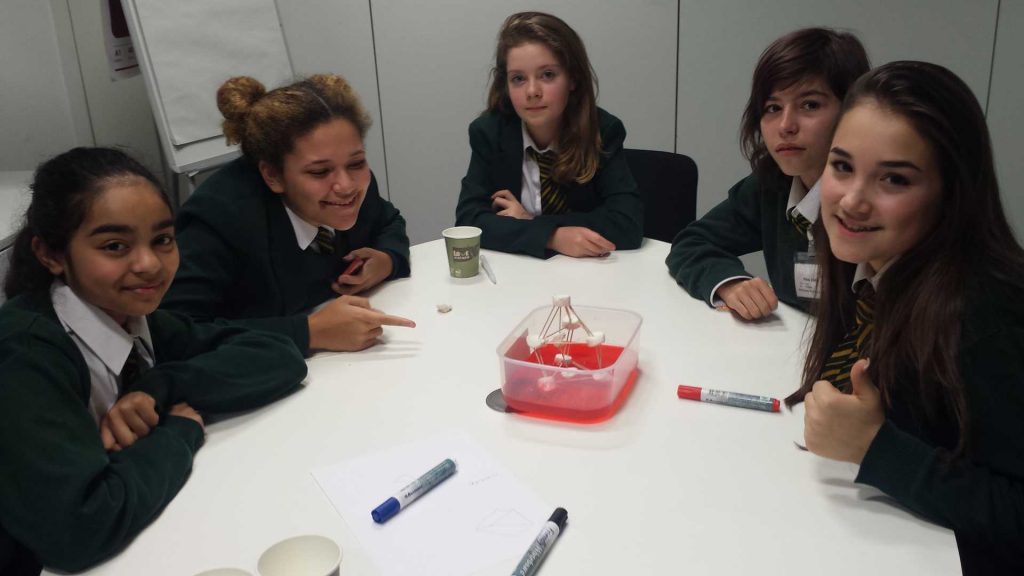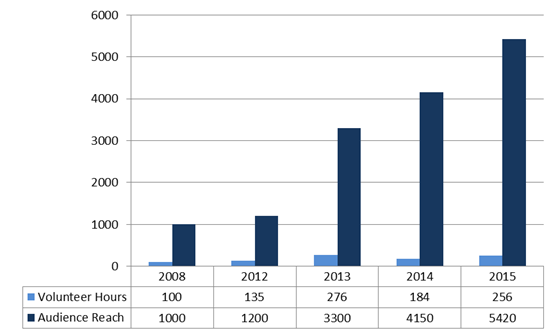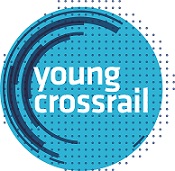
Young Crossrail Programme
Document
type: Case Study
Author:
Lauren Hillier
Publication
Date: 27/09/2016
-
Abstract
Since 2005, Crossrail has run a STEM schools engagement programme called Young Crossrail. Between 2013 and 2016 this programme engaged with 44,000 young people, teachers and parents across 350 schools, colleges and universities reflecting a strong engagement culture. This case study provides an overview of the programme and outlines the core programme of initiatives for Young Crossrail partner schools and others. It identifies key learnings for the delivery of an effective programme including the importance of getting buy in from senior management and explains the need for an engaged volunteering network to help deliver programme objectives.
This case study would be of interest to Education Managers, Corporate Social Responsibility Managers, Youth Engagement Managers, STEM Education Managers and HR.
-
Read the full document
Introduction & Context
The UK, like other countries, is experiencing a shortage of skilled construction workers and engineers. Key challenges such as emerging skills gaps, an aging workforce which is retiring and not being replaced by new entrants and a lack of workforce diversity are contributing to skills shortages within the construction and engineering sectors [1]. This industry wide challenge provided Crossrail with a clear objective to initiate and develop an education programme fit for purpose.
During the bill phase of the project, Crossrail undertook a comprehensive consultation exercise with local communities along the route. This exercise started in September 2003 with a public awareness campaign, which included press releases, leaflets drops, and information packs to 240 stakeholders. Further consultation included 29 public information centres at key locations along the route, press releases, leaflet drops, a 24hour helpdesk distribution of newsletters along school routes [2]. Key themes emerged as part of the consultation process including a desire amongst stakeholders for Crossrail to use it’s platform as the biggest engineering project in Europe to deliver a STEM education programme, with a particular focus on engineering.
Young Crossrail is Crossrail’s engagement programme for young people and schools that ran for 11 years. The programme was established in 2005 and set out to engage with young people and their families within one mile of the Crossrail route. The programme’s objectives were to educate young people and their families about the project and to provide industry context to support schools and existing government initiatives on STEM (Science, Technology, Engineering and Maths) education.
Young Crossrail engaged with young people to challenge the perceptions of engineering and construction and consider careers within the construction and engineering sectors.
The Young Crossrail Programme — The Early Years – 2005 – 2010
From 2005 to 2010, the Young Crossrail programme focused on delivering a small number of initiatives, targeting every Primary and Secondary school within one mile of the route. This demographic was chosen in order to focus on those directly affected by the Crossrail project. As the Crossrail project moved into the delivery phase in 2010 the Crossrail Skills and Employment Strategy was developed and incorporated the Young Crossrail Programme.
The Young Crossrail programme established themes for each age group of young people aged 5-19 (Key Stages 1-5) which included: environmental issues; safety and security; design and technology; and employability; and entrepreneurial skills.
The Young Crossrail Programme — From 2010 – 2016
The introduction of the Crossrail Skills and Employment Strategy in 2010 outlined refreshed objectives for the Young Crossrail Programme:
- Continue to inform and educate about the Crossrail project;
- Facilitate work experience placements;
- Promote careers in transport, engineering, construction and rail infrastructure to young people, particularly girls;
- Promote careers in STEM industries and influence exam choices leading to careers in these fields;
- Grow the volunteering network.
The Young Crossrail programme was a key part of Crossrail’s Skills and Employment Strategy, aligned to other work Crossrail carried out in collaboration with Job CentrePlus to help young people into work and apprenticeships. It stood as part of a broader legacy plan to develop a pipeline of engineering and construction workers beyond the lifetime of the project.
Administration of the Young Crossrail Programme
The Young Crossrail Team was part of Crossrail’s Talent & Resources Directorate who were responsible for, amongst other things, implementing Crossrail’s Skills and Employment Strategy; and the Crossrail Equality Strategy.
The Young Crossrail team consisted of two staff members – a programme manager and a programme coordinator who were responsible for developing and delivering all Young Crossrail activities, engaging with partner schools and managing the Young Crossrail Ambassadors (volunteers from across the project helping to support Young Crossrail activities). The team was provided with a small budget to design, develop and deliver an engaging programme of events.
Engagement with schools – Partner Schools
Between 2010 – 2013 Young Crossrail worked with several schools and began to build relationships with some schools through regular engagement. General awareness of a Crossrail-led education programme was increasing and many schools stayed in touch with the team after the first engagement.
From 2013, the model for engaging with schools and young people was rebranded, focusing on a structured partner schools approach. As a result, the Young Crossrail programme formally started working closely with six partner schools to build sustainable relationships with teachers and students and deliver a programme of STEM and employability related engagements. This was a shift from the original delivery model which targeted all schools within one mile of the route. The partnerships were made reference to on the Crossrail website and communicated to colleagues across the project. A Memorandum of Understanding (MoU), for each school was drawn up and sent to partner schools explaining the approach and expectations from each party. These were signed by Crossrail’s Chairman, who strongly supported the objectives of the Young Crossrail programme.
The partner school approach was adopted to deliver a quality programme of events for students at these schools. The partnerships with schools allowed the programme to build an understanding around what schools require from industry and provided insight into the school curriculum.
Partner schools were chosen due to their proximity to the route (within one mile) with each school located in one of the central section boroughs across the route. Schools were all state run and had varying Ofsted ratings and student abilities. In 2015, the partner school offering was extended to three additional schools. These schools were chosen based on having previous interaction through the Young Crossrail Programme or having approached the Young Crossrail team directly seeking a partnership. See map in Figure 1 which shows the location of the schools along the Crossrail route.
In addition to offering partner schools a core programme of events and activities, Young Crossrail actively encouraged schools to undertake activities to achieve similar objectives around STEM including: promoting the value of careers in the industry; initiating STEM clubs in schools; and continuing professional development (CPD) for teachers.
Figure 1 – Location of Young Crossrail Partner Schools along the Crossrail route.
Partner schools which were part of the programme were required to provide a key contact, generally a STEM subject teacher, for the Young Crossrail team to engage with. Having a single contact within each school streamlined communication and assisted in managing the administration of the programme.
In September, at the beginning of each academic year, a kick off meeting was held with each school which allowed Young Crossrail to provide an overview of how the programme could support the school over the coming academic year. It also allowed schools to advise the Young Crossrail team about events the school had had planned which required support from the Young Crossrail team. Young Crossrail continued to keep in regular contact with the schools throughout the year by email and phone.
Young Crossrail – Core Programme Offering
Young Crossrail offered a bespoke menu of activities, events and workshops for partner school students. This included an annual programme of engagement as shown in Table 1 below. Further detailed information on the Young Crossrail initiatives is at Appendix 1.
Initiative Objective Target Group Frequency Audience Reach
(2013-2016)
British Science Week To run engaging and inspiring events to celebrate and raise awareness of STEM industries Years 7-9 1-2 events during the week 130 National Women in Engineering Day To run events to raise the profile of engineering careers and inspire girls to consider a career in engineering Years 7-13 1-2 events during the week 146 Tomorrow’s Engineers (TE) Week To run interactive events that bring the engineering industry alive for young people Years 7-11 1-2 events during the week 78 Corporate Work experience Scheme To provide meaningful work experience placements for students from partner schools Years 10-12 1-2 weeks (dependent on school) 135 FIRST LEGO League To engage students and volunteers in a 10 week design, programme and build activity using Lego Years 7-11 1-2 meetings per week over 10 weeks per school 90 Skills Show & Skills London careers events To enable Crossrail to showcase the project to young people, teachers and parents in a positive and engaging way 8-24 year olds Approx. 2 shows per year 24,000 Teacher Industrial Partners Scheme To equip STEM teachers with industry awareness, particularly around providing accurate careers advice to students STEM Teachers 2-3 teachers per year 2014-2016: 7 teachers
Rail Week To run an event focused on careers in Rail Year 8 1 event 2016 only: 15
Table 1 – Young Crossrail Programme Summary
British Science Week
British Science Week, formally known as National Science & Engineering Week, occurred over ten days in March every year. The national campaign encouraged organisations and schools to run engaging and inspiring events to celebrate STEM. Young Crossrail supported several schools by providing access to ambassadors and supporting materials during this period in line with the Young Crossrail programme’s objective to promote careers in rail, infrastructure and engineering to young people.
National Women in Engineering Day (NWED)
National Women in Engineering Day, spearheaded by the Women’s Engineering Society, is a day dedicated to raising the profile and celebrating the achievements of women in engineering and inspires girls to consider a career in the industry.
Figure 2 – Crossrail Chairman, Sir Terry Morgan, engages with partner school students at a National Women in Engineering Day event at Crossrail’s head office.
Figure 3 – Partner school students celebrate NWED with Crossrail CEO, Andrew Wolstenholme and inspiring female ambassadors.
Tomorrow’s Engineers (TE) Week
Tomorrow’s Engineers week is an initiative led by EngineeringUK and the Royal Academy of Engineering. The week in November is focused on reaching out to employers, organisations and educators across the country to host engaging activities that bring the engineering industry alive for young people.
Figure 4 – Tomorrow’s Engineers Week event with partner school students at Crossrail’s head office.
Corporate Work Experience Scheme
A structured work experience scheme was developed to provide quality placements with positive impact. The placements typically ran for two weeks and took place over the academic year. Students who participated in the work experience scheme were aged between 14-17 years old (years 10-12).
More detail on the corporate work experience scheme can be found in the Corporate Work Experience Learning Legacy Micro-Report.
FIRST LEGO League (FLL)
FIRST LEGO League is an international robotics competition where students are challenged to develop a solution to a real world problem such as food safety, recycling, energy, etc. As part of the project, school teams work together to design, build and programme a robot to complete a series of set challenges on a table top board. Students learned to apply, STEM concepts as well as using and developing skills in leadership, teamwork, communication and creativity.
Skills Events
Crossrail exhibited at two of the biggest careers and skills events in the UK; Skills London and Skills Show. The shows which both take place in November enabled Crossrail to showcase the project to visitors including young people, teachers and parents in a positive and engaging way. Annually the shows attract over 100,000 visitors, and were Young Crossrail’s largest engagement events on the year. The events provided Crossrail with a strong platform to reach out to larger numbers of young people.
Figure 5 – Skills events audience reach and volunteer hours
Figure 6 – Crossrail’s display at Skills Show Birmingham.
Teacher Industrial Partners Scheme
In 2014, Crossrail was approached by The Institution of Mechanical Engineers to pilot a Teacher Industrial Placement Scheme delivered in partnership with the Institution of Engineering and Technology and the National Science Learning Centre.
The scheme placed STEM teachers into industry in order for them to understand the work that goes into large scale infrastructure projects as well as learning about the vast array of career opportunities in engineering and construction. One of the teachers Crossrail hosted commented that he felt “much more knowledgeable about careers in STEM industries”, and felt “more confident in giving careers advice about the industry to his students”.
Rail Week
Rail Week is a new initiative for 2016, spearheaded by the Young Rail Professionals network. The week aims to unite industry in promoting careers in the rail sector through events, workshops and site visits. Rail Week is supported by a dedicated website, and is coordinated by a project manager who brings together all the events taking place across the industry.
In 2016, Young Crossrail collaborated with Crossrail’s Programme Delivery Partner Bechtel in hosting a site visit to Crossrail’s Farringdon station and facilitating a speed networking session.
Non-Partner School Engagement
In addition to the core programme for partner schools, Young Crossrail worked with other schools across London where resourcing permitted.
Young Crossrail received regular requests from schools asking for support for educational initiatives such as careers fairs and apprenticeship events and requests for Crossrail representatives to visit the school to give careers talks or run engineering workshops.
These requests were received through a centralised Young Crossrail mailbox or directed from the Crossrail helpdesk. If the request had a clear link to Young Crossrail Programme objectives and the location of school was based in or around London, the Young Crossrail team advertised the opportunity to volunteers and coordinated resources and responses.
Outside of the partner school programme, Young Crossrail worked with over 350 other schools, colleges and universities based on direct requests demonstrating that the Young Crossrail Programme was highly regarded by educators.
Resources
Working in Partnership with Others
Young Crossrail worked with several external social enterprises, charities and organisations to help deliver Young Crossrail Programme objectives. These included Enabling Enterprise; The Engineering Development Trust (go4set project); Education Business Partnerships (EBPs); The East London Business Alliance (ELBA); and the MET Police (Junior Citizens Scheme). The organisations were chosen due to their alignment to the Young Crossrail Programme objectives
STEM and Educational Business Challenges
In 2014, Young Crossrail began working with undergraduate engineering students from Worcester Polytechnic Institute (WPI), a University in the United States.
As part of their course requirements, small teams of WPI students worked under the guidance of the Young Crossrail team to conduct research and produce deliverables from a project brief set by the team.
As Young Crossrail did not own any educational resources, the student briefs were based on producing a catalogue of STEM educational resources which could be used by teachers and/or Young Crossrail ambassadors.
Students in 2014 produced a menu of four one hour classroom activities for Key Stage 3 and Key Stage 4 students that could be delivered by the teacher/ambassador and used in STEM clubs. The suite of activities included a student resource guide, teacher/ambassador resource guide and a teacher/ambassador PowerPoint presentation. Resources ranged from designing and building a station to project management tasks using Lego. All of these resources are available in the document links below associated with this paper.
In 2015, the team produced a 10 -12 week Digital Railway project. The resource was designed for Key Stage 4 students working in small teams and could be assisted by Young Crossrail ambassadors upon visiting the school throughout the duration of the project. The resource is split into five modules, each one focused on each of the phases used in Business Information Modelling (BIM). The resource is also mapped to Cambridge Nationals qualifications in Engineering Design Level 1/2, Creative iMedia Level 1/2 and Employability Skills Level 2.
In 2016, Crossrail collaborated with The Institute of Structural Engineers (IStructE) on a joint project brief. The resource had to link to STEM and have an emphasis on structural engineering.
The team developed a “Build Your Own City” resource which focused on UK housing supply. Teams of three students, who each take on a role as a structural engineer, architect or project manager, are challenged to plan, build and pitch their ideas for a new build development in a city. The resource teaches learners about the design, bid, and build process within infrastructure management.
Alongside the STEM resources created by WPI students, Young Crossrail developed a number of activities that could be delivered by ambassadors. These included a guess the engineer game, city link transport activity and quizzes. The team also utilised resources from Tomorrow’s Engineers, the Science Museum, online resources and various Engineering Institutions.
Supporting Young Crossrail Programme Delivery
Young Crossrail Ambassador Programme
Young Crossrail Ambassadors were volunteers from across the project who signed up to support Young Crossrail activities with schools and young people. At its peak, Young Crossrail had over 280 ambassadors. Several Young Crossrail Ambassadors were also STEMNET ambassadors.
The role of a Young Crossrail Ambassador was varied, from being a mentor for a FIRST Lego League team, supporting exhibition stands and careers activities in schools to assisting students in learning more about the project and providing work experience opportunities to our partner school students and others. The programme offered several opportunities for ambassadors to get involved in, no matter what their level of previous volunteering experience.
The commitment from ambassadors was flexible and there was no minimum level of contribution expected by ambassadors. This provided ambassadors with the flexibility of being involved in the programme and ensured that ambassadors were able to effectively balance volunteering alongside their day-to-day work. Monthly communication via email was sent to all ambassadors notifying volunteers of upcoming school engagement opportunities to get involved with. The team also used various internal communication channels, including online newsletters, leadership briefing packs and on-site newsletters to promote the programme and the opportunities available to the wider project.
Safeguarding
In order to ensure the safety and wellbeing of young people and ambassadors, Young Crossrail made recommendations for effective practice and engagement with young people.
- Young Crossrail ambassadors were encouraged to sign up as STEM ambassadors through STEMNET.
As part of the on boarding process, STEM ambassadors attended a two hour introductory workshop delivered by STEMNET representatives who provided an overview of volunteering with young people, role as a volunteer and responsibilities in the classroom.
STEMNET also carried out an enhanced Disclosure and Barring Service (DBS) check for each volunteer signing up to the programme. Since Young Crossrail did not carry out DBS checks for Young Crossrail ambassadors, this was a useful service to direct ambassadors towards.
- The Young Crossrail team ensured that ambassadors would not be solely responsible for a student or students without a member of teaching staff present. This negated a formal DBS check being required.
- Young Crossrail worked with the Health and Safety team to ensure that Risk Assessments appropriate for young persons visiting offices/ sites were produced and distributed to the appropriate people.
- Work Experience hosts were required to complete a Risk Assessment prior to students starting placements at Crossrail.
Overall, Young Crossrail ambassadors have been crucial to raising awareness of both the Crossrail project and the value of subjects which can lead to engineering and construction-related careers.
Senior Leadership Buy-in
In addition to having a strong Ambassador Programme, the Young Crossrail Programme also enjoyed strong support from the Crossrail Chairman; the Crossrail Chief Executive; and the Senior Leadership Team. Strong senior leadership was critical in driving up the profile of the Young Crossrail Programme both internally to staff and externally to stakeholders.
Key Performance Indicators (KPIs)
In order to measure the output and effectiveness of the Young Crossrail programme, KPIs were put in place for benchmarking and reporting, which were reviewed annually. These were:
- Audience Reach – number of young people, teachers and parents engaged on the programme
- Volunteer Hours – number of hours Young Crossrail ambassadors volunteered to support the running of the programme
- Volunteers – number of Young Crossrail ambassadors signed up to the programme
KPIs were aligned with the overall objectives for the Talent & Resources Directorate and implemented from 2013.
In order to effectively track progress on KPIs, the team developed an Activity Log spreadsheet. The Activity Log was used to track a number of engagement criteria including, type of activity and description of initiative, school, year group and borough in addition to audience reach and volunteers’ hours data. The activity log enabled the team to oversee and plan for upcoming events as well as accurately calculating KPI data for timely reporting.
Between 2013 and June 2016, Young Crossrail ambassadors volunteered over 4,000 hours and engaged with over 44,000 young people, teachers and parents across 350 schools, colleges and universities, reflecting strong engagement. Levels of engagement were not tracked in this detail before 2013 which saw much lower levels of engagement however a rough estimate between 2005 and 2013 would be 5,000 audience reach and 2,000 volunteer hours.
Year Audience Reach Volunteer Hours 2013 8,150 1,055 2014 13,248 1,247 2015 14,870 1,080 2016 forecast 8,000 650 Table 2 – Young Crossrail Programme KPIs
Transport and Infrastructure Education Partnership (TIEP)
The TIEP group was chaired by the Young Crossrail Programme Manager. Members of the group included Education/ CSR representatives from Transport and Infrastructure projects and organisations including Transport for London, High Speed 2, Tideway, National Rail, and STEMNET. The group met approximately four times a year to share knowledge, ideas and identify ways in which group members could work collaboratively to inspire young people into STEM careers.
This group will continue beyond the Young Crossrail, and will be led by colleagues from Transport for London.
Measuring Impact
The team measured the success of individual engagements by using evaluation forms during or after an initiative. Evaluation forms were distributed to students and volunteers after sessions organised internally by the team.
Student evaluations focused primarily on three areas; overall rating of the event/ initiative, skills development and perceptions/ desirability of a career in engineering.
Volunteer evaluations also focused primarily on three distinct areas including: overall rating of the event/ initiative; impact on the volunteer’s personal development; and the impact volunteer felt they had on the student(s).
Existing evaluation forms were amended in 2015 based on an exercise carried out in a TIEP meeting. TIEP members were asked to share their own organisation’s evaluation to establish a common evaluation framework across industry. This meant that it was easier to compare and benchmark feedback against across organisations.
Conclusion/ Lessons Learned
- Schools require a lead time of approximately two months to identify students, and organise permission letters, risk assessments and photo permission slips for external school trips. With the large number of events Young Crossrail organised, two months lead time was sometimes unachievable. This meant that take up from schools was lower than expected and fewer numbers of schools/ students were able to take part. Good forward planning is critical to avoid this problem as regular and ongoing communication regularly with volunteers and schools.
- You don’t need a large budget to deliver an effective programme. Success is driven on effective project management, engagement and committed volunteers. Having an engaged network of volunteers and relevant and interesting resources is key to making use of a limited budget.
- Prior to 2013, Young Crossrail did not have a formalised process to tracking all activity taking place. This was due to the low level of engagement compared to activity taking place between 2013 and 2016. This meant that some data from the early years of the programme were not captured. The introduction of the Young Crossrail activity log proved essential for the day to day management of the programme including forward planning and effective in enabling efficient and accurate reporting. In reflection, the tracker should have been introduced at the beginning of the programme.
- Crossrail did not have a formal volunteering policy that allowed employees an agreed amount of time to volunteer within working hours. Requests were instead subject to line manager approval. A formal volunteering policy would establish a consistent approach for volunteering across the organisation.
Recommendations for Future Projects
- When setting up an education programme, ensure clear objectives are defined at the beginning. Once defined, communicate objectives to the wider organisation and use them as a guide for selecting which initiatives/ external organisations to include.
- Senior Leadership team’s buy-in to the programme is critical to it’s success. Arrange meetings to discuss objectives, deliverables and benefits to running the programme and ask Senior Leadership to play an active part in the delivery of the programme. Crossrail’s Chief Executive and Chairman both played active roles volunteering at events including speed networking, work experience and hosting teachers from the teacher placement scheme. By having Senior Leadership involved early on, volunteering as an ambassador becomes part of the organisational culture and seen as a positive thing to do.
- Be determined with partner schools. Schools in London are offered a lot of support from industry. Many of the partner schools Young Crossrail worked with had several other organisations they also worked closely with. This meant that take up for some Young Crossrail events was low and led to schools dropping out of event that they had previously agreed. Be clear with schools that events require planning and organising and cancelling is an unnecessary diversion of resources and reflects negatively on the event planned. Engineering UK work across industry and keep a log of where engineering outreach has been delivered to schools. Future projects could use this data to target schools in particular areas or schools who have not been engaged with.
- Take time to engage with volunteers and provide opportunities for volunteers to provide constructive feedback. This includes taking the time to thank volunteers for giving up their time and nominating for internal awards/commendations – this encourages volunteers to take part again.
- If planning to exhibit at careers fairs, produce collateral that can be re-used or re-purposed. This was particularly useful when exhibiting at Skills Show and Skills London which take place within two weeks of each other and ensured a sustainable approach and drove value for money.
References
[1] Morgan, T. (2016), Transport Infrastructure Skills Strategy: Building Sustainable Skills – Department for Transport
[2] Crossrail, Crossrail Bill Supporting Documents, Technical Reports – Community Impacts, 2010
-
Document Links
-
Authors
Lauren Hillier - Crossrail Ltd
Lauren Hillier was the Young Crossrail Programme Manager until September 2016. Lauren was responsible for the delivery of Crossrail’s education programme, Young Crossrail, including stakeholder management, the Young Crossrail Ambassador Programme, as well as STEM activity and projects. Lauren joined Crossrail in April 2013 supporting the Skills and Employment team to deliver Crossrail’s skills and employment agenda before joining the Young Crossrail team in November 2013.
-
Peer Reviewers
Dr Hilarie Bateman PhD MEdn BSc, Murray Edwards College, University of Cambridge
Scott Young, Head of Skills and Employment, Tideway
